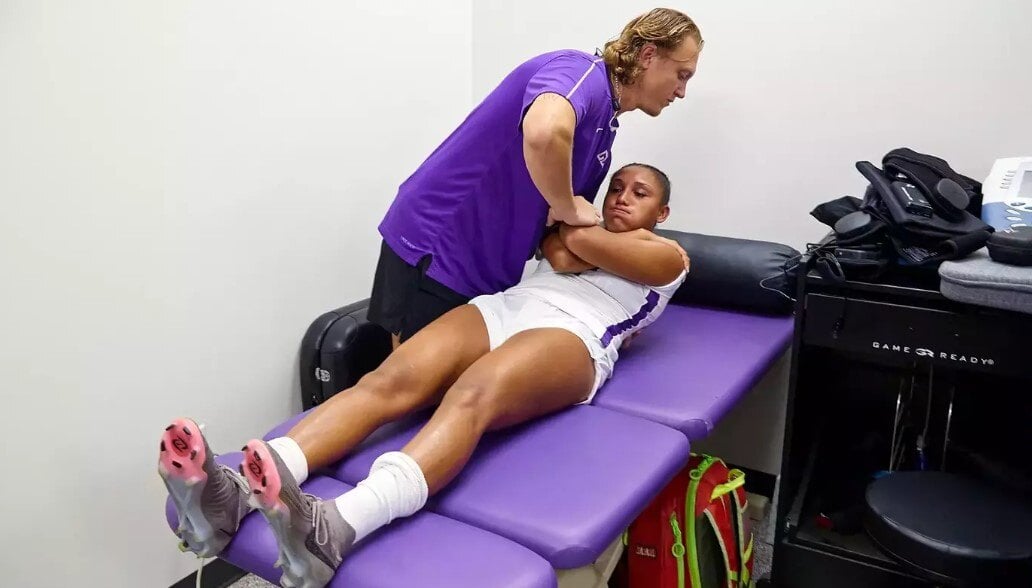Statistics on Athletic Training in the US
 The landscape of athletic training in the United States is evolving, with significant changes in demographics, employment opportunities, and the overall role of Athletic Trainers in various settings.
The landscape of athletic training in the United States is evolving, with significant changes in demographics, employment opportunities, and the overall role of Athletic Trainers in various settings.
 Utilizing a comprehensive database of 30 million profiles, Zippia's research, verified against sources like the BLS and Census data, provides a detailed look into the current state and future prospects of this crucial profession.
Utilizing a comprehensive database of 30 million profiles, Zippia's research, verified against sources like the BLS and Census data, provides a detailed look into the current state and future prospects of this crucial profession.
Current State of Athletic Trainers in the U.S.
There are some discrepencies as to how many ATs may be currently employed.
According to the Board of Certification for the Athletic Trainer (BOC), there are currently 56,906 Certified Athletic Trainers as of January 2023.
Zippia estimates there are over 25,119 Athletic Trainers employed across the United States. But the BLS states there are 33,800 jobs as of 2022.
- The demographic breakdown reveals a nearly even gender distribution: 46.9% of trainers being women and 53.1% men.
- The average age of Athletic Trainers is 40 years
- ATs are predominantly White (61.8%), followed by Hispanic or Latino (14.9%), Black or African American (9.6%), and Asian (8.3%).
- Notably, Athletic Trainers are most in-demand in Atlanta, GA
- The highest average annual wage is offered in Greenwich, CT, at $59,084.
In terms of pay equity, women Athletic Trainers earned 99% of what their male counterparts did in 2022.
Connecticut emerges as the best state for Athletic Trainers, offering favorable conditions for living and working.
In comparison to private companies, Athletic Trainers are 57% more likely to work in educational settings.
Educational Path and Job Outlook
To become an Athletic Trainer, a master's degree is required, with some professionals also holding more advanced degrees.
Licensing or certification is a must in nearly all states.
The median annual wage for ATs as of May 2022 was $53,840.
There was a 9.2% increase in students admitted to athletic training programs over 2020-21. In addition, in 2021-22, there was approximately 18% more graduates transitioning into athletic training as a destination profession when compared to 2017-18.
The job outlook for Athletic Trainers is promising, with an expected growth of 14% from 2022 to 2032, which is much faster than the average for all occupations.
Annually, about 2,700 openings are projected, mostly due to the need for replacing workers who retire or switch occupations.
Industries Employing Athletic Trainers
The top industries employing Athletic Trainers include:
- Colleges, junior colleges, and universities
- Professional teams
- General medical, surgical hospitals, and specialty hospitals
- Elementary and secondary schools
- Orthopedic offices, sports and fitness facilities, physician practices
Future Trends and Impact
The Board of Certification for the Athletic Trainer (BOC) reports a steady increase in Certified Athletic Trainers, with a projection of the highest number to date by the end of 2023.
The future job market requires a continued focus on elevating athletic training as a profession.
The number of newly Certified Athletic Trainers has remained stable, with a notable increase in students admitted to athletic training programs and graduates transitioning into the profession.
A number of ATs are pursing careers outside of the traditional education settings. Many work directly for employers or with organizations that provide employer health services. Industrial companies have realized that their employees are similar to athletes and need to prevent injuries and lower costs with the help of ATs.
For example, Nancy Burke, MS, ATC, VATL, an Athletic Trainer with the Fairfax County Police Department, highlights the cost-effectiveness of utilizing ATs.
In the academy setting, overall medical costs were reduced by 49.5% and musculoskeletal medical costs by 86.3%. Similarly, in a large county police force, overall and musculoskeletal medical costs were reduced by 22.05% and 21.2%, respectively.
In conclusion, the athletic training profession in the U.S. is undergoing a fairly large transformation, marked by growing demand, diversification of employment settings, and an increasing recognition of the value Athletic Trainers bring to health care and cost management.
![HR Logo [Recovered]_Full Color Vertical-1](https://blog.healthyroster.com/hs-fs/hubfs/HR%20Logo%20%5BRecovered%5D_Full%20Color%20Vertical-1.png?width=199&height=178&name=HR%20Logo%20%5BRecovered%5D_Full%20Color%20Vertical-1.png)
 By
By


